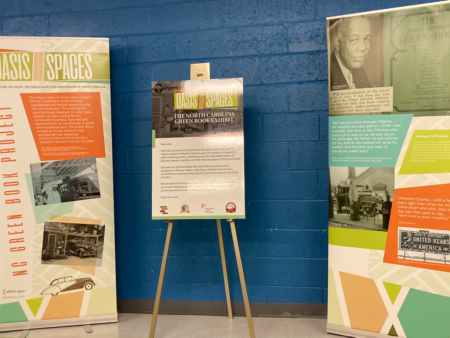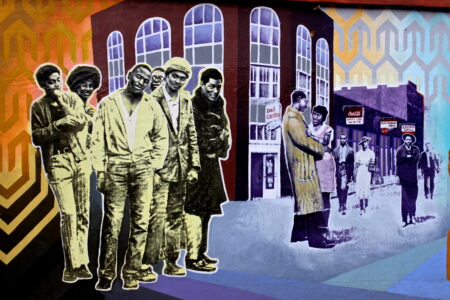Asheville community centers host Green Book exhibit highlighting Black life during Jim Crow era - The City of Asheville
Did you know that 327 businesses in North Carolina were listed in The Negro Motorist Green Book – including 13 in Buncombe County? Published from 1936 to 1966, the book was used as both a travel guide and a tool of resistance to confront the realities of racial discrimination in the United States and beyond. Restaurants, hotels, nightclubs, beauty salons, and other types of businesses were listed in The Green Book, which identified safe "oasis spaces" for Black travelers and allowed African-American businesses to thrive.
In November, three Asheville Parks & Recreation (APR) community centers host "Navigating Jim Crow: The Green Book and Oasis Spaces in North Carolina," a traveling exhibit about sites important to, and personal memories about, African American travel using The Negro Motorist Green Book during the Jim Crow era of legal segregation. Created by the North Carolina African American Heritage Commission (AAHC), a division of the NC Department of Natural and Cultural Resources, eight vibrant panels showcase images of business owners, travelers, and historic and present-day photos of North Carolina Green Book sites. The words of African American travelers and descendants of Green Book site owners collected by the AAHC from oral histories are featured prominently in the exhibit.
"Locally, businesses like The Savoy Hotel on Eagle Street, James Key Hotel on Southside, Phyliss Wheatley YWCA, and other Asheville establishments played an imperative role in creating safe spaces for locals and tourists," according to D. Tyrell McGirt, APR Director. "We're proud to honor their legacy by hosting this exhibit. Many elders have first-hand accounts of visiting these businesses, and even using Green Books for travel, and this is an opportunity for learning, critical thinking, and discussion for them, as well as younger generations and people who've never known the vital importance of such a tool."
The self-guided exhibit is free and open to the public at select APR community centers.

Asheville Parks & Recreation
With its oldest parks dating to the 1890s, Asheville Parks & Recreation manages a unique collection of more than 65 public parks, playgrounds, and open spaces throughout the city in a system that also includes full-complex recreation centers, swimming pools, Riverside Cemetery, sports fields and courts, and community centers that offer a variety of wellness-, education-, and culture-related programs for Ashevillians of all ages. With 10 miles of paved greenways and numerous natural surface trails, its complete portfolio acts as the foundation of a vibrant hub for the people of Asheville to connect with their neighbors and explore the natural beauty of a livable and walkable city.
Driven by the promise that Asheville is a better and safer place when everyone from infants to retirees has the opportunity to be supported, healthy, and successful, Asheville Parks & Recreation was the first nationally-accredited municipal recreation department in the United States. For latest updates, sign up for Asheville Parks & Recreation's monthly newsletter, follow the department on Facebook (@aprca) and Instagram (@ashevilleparksandrecreation), or visit www.ashevillenc.gov/parks.
Comments
Post a Comment